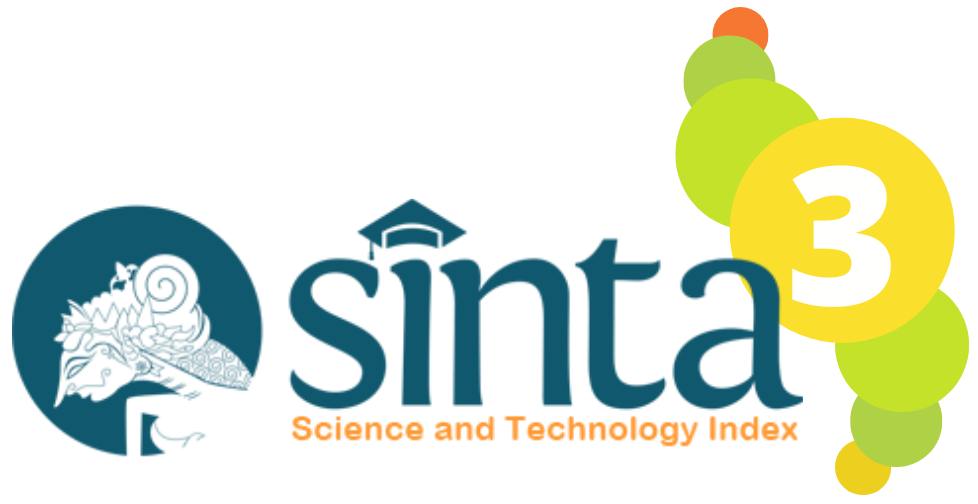Evaluation of Liquefaction Hazard in the West Coastal Area of Bengkulu City Due to Megathrust Earthquake
DOI:
10.29303/jpft.v11i1a.9070Published:
2025-07-30Issue:
Vol. 11 No. 1a (2025): Special IssueKeywords:
liquefaction, Ground response, Non-linear analysis, Peak ground accelerationArticles
Downloads
How to Cite
Downloads
Metrics
Abstract
This study analyzes the liquefaction potential in the coastal area of Bengkulu due to the large subduction earthquake in 2007. The study was conducted systematically, beginning with field investigations with shear wave velocity measurements. Spectral matching and ground motion prediction based on relative attenuation models were conducted to obtain a representative picture of ground motion at the study site. Subsequently, soil response analysis was used to evaluate the behaviour of the soil under seismic loading. A non-linear finite element approach was applied to assess the dynamic characteristics of the soil, including excess pore water pressure, shear stress-strain response, and stress path. In addition, an empirical evaluation was conducted to determine the liquefaction potential. The results show that liquefaction has the potential to occur at shallow depths, especially in the first and second layers of the sand layer. The results of numerical and empirical analyses show consistent patterns and agreement. The comparison between the excess pore pressure ratio and the safety factor aligns with the findings from previous studies. These findings emphasise the importance of implementing seismic hazard mitigation measures in the study area.
References
Dammala, P. K., Kumar, S. S., Krishna, A. M., & Bhattacharya, S. (2019). Dynamic soil properties and liquefaction potential of northeast Indian soil for non-linear effective stress analysis. Bulletin of Earthquake Engineering, 17(6), 2899–2933. https://doi.org/10.1007/s10518-019-00592-6 DOI: https://doi.org/10.1007/s10518-019-00592-6
Hashash, Y. M. A., Dashti, S., Romero, M. I., Ghayoomi, M., & Musgrove, M. (2015). Evaluation of 1-D seismic site response modeling of sand using centrifuge experiments. Soil Dynamics and Earthquake Engineering, 78, 19–31. https://doi.org/10.1016/j.soildyn.2015.07.003 DOI: https://doi.org/10.1016/j.soildyn.2015.07.003
Hausler E, & Anderson A. (2007). Observation of the 12 and 13 September 2007Earthquake, Sumatra, Indonesia.
Idini, B., Rojas, F., Ruiz, S., & Pastén, C. (2017). Ground motion prediction equations for the Chilean subduction zone. Bulletin of Earthquake Engineering, 15(5), 1853–1880. https://doi.org/10.1007/s10518-016-0050-1 DOI: https://doi.org/10.1007/s10518-016-0050-1
Khosravi, A., Shahbazan, P., & Pak, A. (2018). Impact of hydraulic hysteresis on the small strain shear modulus of unsaturated sand. Soils and Foundations, 58(2), 344–354. https://doi.org/10.1016/j.sandf.2018.02.018 DOI: https://doi.org/10.1016/j.sandf.2018.02.018
Mase, L. Z. (2018). Reliability study of spectral acceleration designs against earthquakes in Bengkulu City, Indonesia. International Journal of Technology, 9(5), 910–924. https://doi.org/10.14716/ijtech.v9i5.621 DOI: https://doi.org/10.14716/ijtech.v9i5.621
Mase, L. Z. (2020). Seismic Hazard Vulnerability of Bengkulu City, Indonesia, Based on Deterministic Seismic Hazard Analysis. Geotechnical and Geological Engineering, 38(5), 5433–5455. https://doi.org/10.1007/s10706-020-01375-6 DOI: https://doi.org/10.1007/s10706-020-01375-6
Mase, L. Z. (2024). A Case Study of Liquefaction Potential Verification During a Strong Earthquake at Lempuing Subdistrict, Bengkulu City, Indonesia. Transportation Infrastructure Geotechnology, 11(4), 1547–1572. https://doi.org/10.1007/s40515-023-00335-w DOI: https://doi.org/10.1007/s40515-023-00335-w
Mase, L. Z., Likitlersuang, S., & Tobita, T. (2019). Cyclic behaviour and liquefaction resistance of Izumio sands in Osaka, Japan. Marine Georesources and Geotechnology, 37(7), 765–774. https://doi.org/10.1080/1064119X.2018.1485793 DOI: https://doi.org/10.1080/1064119X.2018.1485793
Mase, L. Z., Likitlersuang, S., & Tobita, T. (2021). Ground Motion Parameters and Resonance Effect During Strong Earthquake in Northern Thailand. Geotechnical and Geological Engineering, 39(3), 2207–2219. https://doi.org/10.1007/s10706-020-01619-5 DOI: https://doi.org/10.1007/s10706-020-01619-5
Mase, L. Z., Likitlersuang, S., & Tobita, T. (2022). Verification of Liquefaction Potential during the Strong Earthquake at the Border of Thailand-Myanmar. Journal of Earthquake Engineering, 26(4), 2023–2050. https://doi.org/10.1080/13632469.2020.1751346 DOI: https://doi.org/10.1080/13632469.2020.1751346
Mase, L. Z., Tanapalungkorn, W., Likitlersuang, S., Ueda, K., & Tobita, T. (2022). Liquefaction analysis of Izumio sands under variation of ground motions during strong earthquake in Osaka, Japan. Soils and Foundations, 62(5). https://doi.org/10.1016/j.sandf.2022.101218 DOI: https://doi.org/10.1016/j.sandf.2022.101218
Misliniyati, R., Mase, L. Z., Syahbana, A. J., & Soebowo, E. (2018). Seismic hazard mitigation for Bengkulu Coastal area based on site class analysis. IOP Conference Series: Earth and Environmental Science, 212(1). https://doi.org/10.1088/1755-1315/212/1/012004 DOI: https://doi.org/10.1088/1755-1315/212/1/012004
Misliniyati, R., Razali, M. R., & Muktadir, R. (2013). BERDASARKAN DATA CONE PENETRATION TEST DI KELURAHAN LEMPUING, KOTA BENGKULU. In Jurnal Inersia (Vol. 5, Issue 2).
Pender, M. J., Orense, R. P., Wotherspoon, L. M., & Storie, L. B. (2016). Effect of permeability on the cyclic generation and dissipation of pore pressures in saturated gravel layers. Geotechnique, 66(4), 313–322. https://doi.org/10.1680/jgeot.SIP.15.P.024 DOI: https://doi.org/10.1680/jgeot.SIP.15.P.024
Sas, W., Gabryś, K., & Szymański, A. (2015). Effect of time on dynamic shear modulus of selected cohesive soil of one section of express way no. S2 in Warsaw. Acta Geophysica, 63(2), 398–413. https://doi.org/10.2478/s11600-014-0256-z DOI: https://doi.org/10.2478/s11600-014-0256-z
SNI 1726 2019. (n.d.).
Sukkarak, R., Tanapalungkorn, W., Likitlersuang, S., & Ueda, K. (2021). Liquefaction analysis of sandy soil during strong earthquake in Northern Thailand. Soils and Foundations, 61(5), 1302–1318. https://doi.org/10.1016/j.sandf.2021.07.003 DOI: https://doi.org/10.1016/j.sandf.2021.07.003
Yoshida, N. (2015). Geotechnical, Geological and Earthquake Engineering Seismic Ground Response Analysis. http://www.springer.com/series/6011 DOI: https://doi.org/10.1007/978-94-017-9460-2
Zalbuin Mase, L., Tanapalungkorn, W., Likitlersuang, S., Ueda, K., & Tobita, T. (2025). Ground motion, liquefaction and hazard analysis at the Palu site during the 2018 Indonesian great earthquake. China Geology, 8(0), 1–23. https://doi.org/10.31035/cg20240065 DOI: https://doi.org/10.31035/cg20240065
Zhou, W., Chen, Y., Ma, G., Yang, L., & Chang, X. (2017). A modified dynamic shear modulus model for rockfill materials under a wide range of shear strain amplitudes. Soil Dynamics and Earthquake Engineering, 92, 229–238. https://doi.org/10.1016/j.soildyn.2016.10.027 DOI: https://doi.org/10.1016/j.soildyn.2016.10.027
Author Biographies
Fitria Leonni Valetta, University of Bengkulu
Lindung Zalbuin Mase, University of Bengkulu
Department of Civil Engineering, Faculty of Engineering
Khairul Amri, University of Bengkulu
Department of Civil Engineering, Faculty of Engineering
Rena Misliniyati, University of Bengkulu
Department of Civil Engineering, Faculty of Engineering
Hardiansyah Hardiansyah, University of Bengkulu
Department of Civil Engineering, Faculty of Engineering
License
Copyright (c) 2025 Fitria Leonni Valetta, Lindung Zalbuin Mase, Khairul Amri, Rena Misliniyati, Hardiansyah Hardiansyah

This work is licensed under a Creative Commons Attribution-ShareAlike 4.0 International License.
Authors who publish with Jurnal Pendidikan Fisika dan Teknologi (JPFT) agree to the following terms:
- Authors retain copyright and grant the journal right of first publication with the work simultaneously licensed under a Creative Commons Attribution License 4.0 International License (CC-BY-SA License). This license allows authors to use all articles, data sets, graphics, and appendices in data mining applications, search engines, web sites, blogs, and other platforms by providing an appropriate reference. The journal allows the author(s) to hold the copyright without restrictions and will retain publishing rights without restrictions.
- Authors are able to enter into separate, additional contractual arrangements for the non-exclusive distribution of the journal's published version of the work (e.g., post it to an institutional repository or publish it in a book), with an acknowledgement of its initial publication in Jurnal Pendidikan Fisika dan Teknologi (JPFT).
- Authors are permitted and encouraged to post their work online (e.g., in institutional repositories or on their website) prior to and during the submission process, as it can lead to productive exchanges, as well as earlier and greater citation of published work (See The Effect of Open Access).










